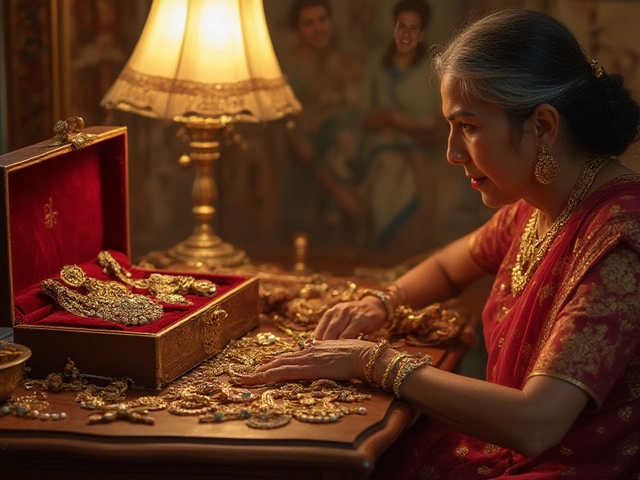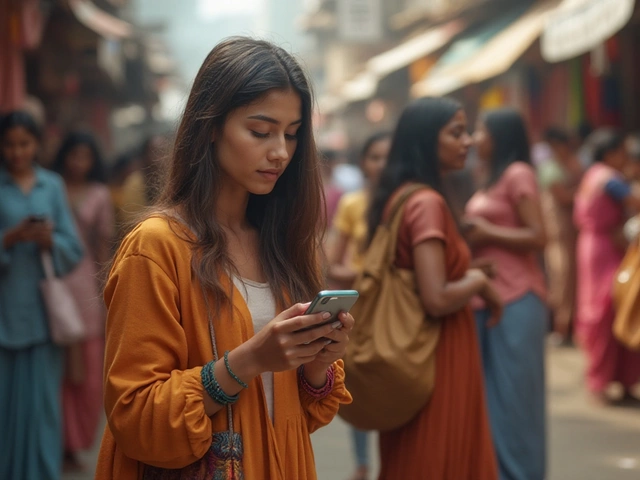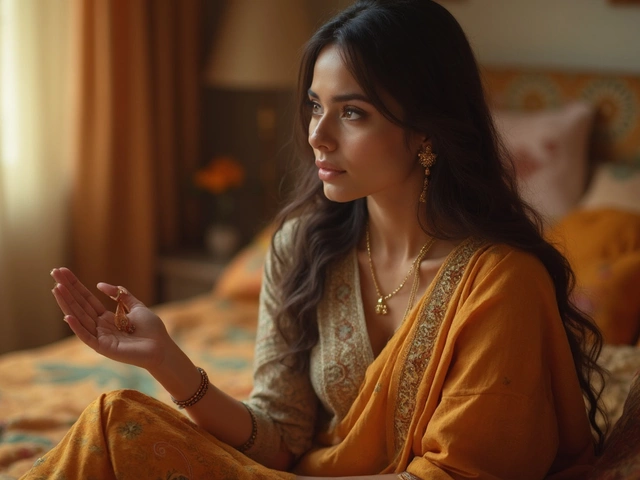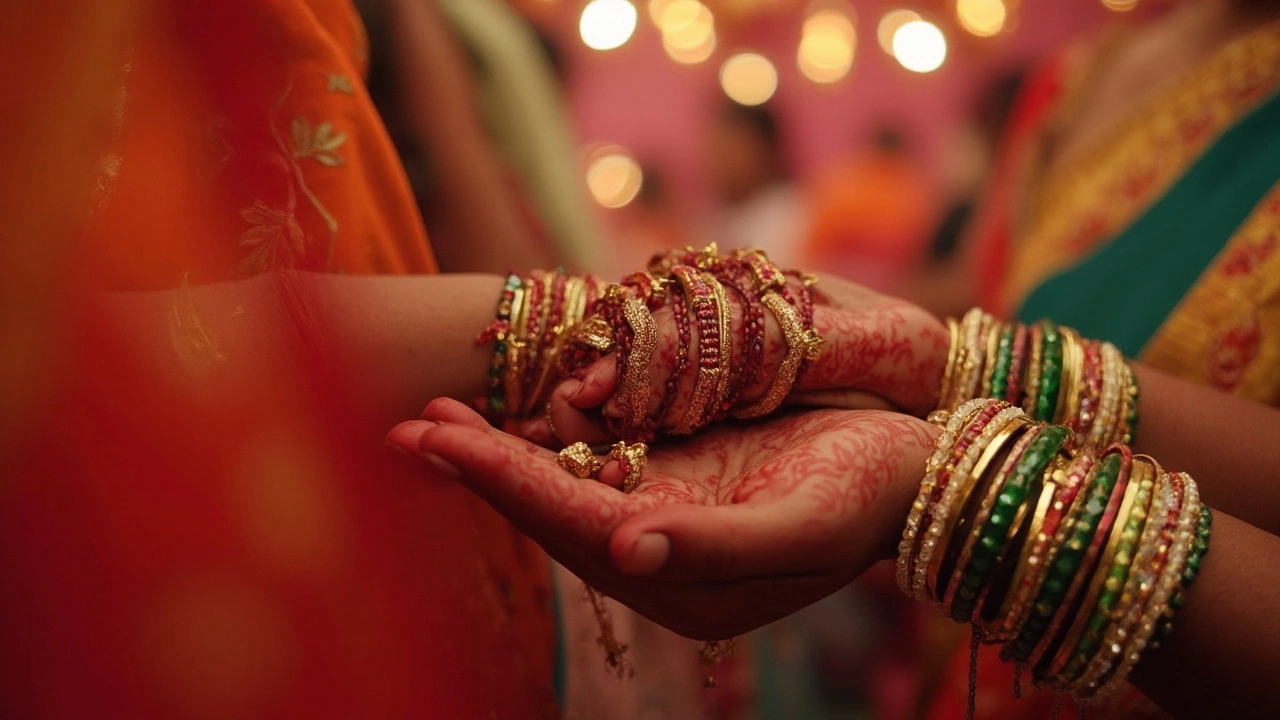
Flip through any family album in India and you’ll spot one thing shimmering on almost every woman’s wrist—bangles. They’re not just colorful circles of glass or metal. For Indian women, bangles have meaning baked in. They can show if someone’s married, where she’s from, or what tradition she follows. For a lot of women, slipping on a stack of bangles in the morning feels just as essential as a good cup of chai.
But there’s more. Bangles often carry memories, blessings, and even superstitions tied to them. Some moms pass down their glass bangles to their daughters for good luck or to remember a special day. Certain colors and styles are worn on festivals, while gold or metal bangles come out for big celebrations. If you ever wondered why some women never leave home without theirs, you’ll soon see it’s not just fashion—it’s about stories, identity, and a sense of belonging.
- Why Bangles Are More Than Just Jewelry
- Cultural and Symbolic Meanings
- Types of Bangles and Their Uses
- Tips for Choosing and Wearing Bangles
Why Bangles Are More Than Just Jewelry
For women across India, bangles aren’t just an add-on to an outfit. They’re loaded with layers of meaning and have concrete importance in everyday life and cultural events. Let’s break it down—what makes them special goes way past looking good.
Bangles play a big role in family traditions and personal milestones. When a girl gets married, it’s common for her in-laws to gift her a full set of red and green glass bangles for prosperity and long life. The sound of clinking bangles is thought to bring positive energy into a home, almost like a subtle reminder that someone is around and life carries on.
Did you know each region in India has its own bangle customs? Punjabi brides wear ivory and red 'chooda' after marriage, while Bengali women stick to shakha (white conch shell) and pola (red coral) bangles. Even unmarried girls in Maharashtra often receive green glass bangles before marriage during the 'Haldi' ceremony—a sign of good luck.
Science isn’t totally left out, either. There’s a belief that the circular shape and material of bangles help in blood circulation in the wrist. While no big study has confirmed this, a lot of women swear by the comforting feel of metal or glass touching their skin throughout the day.
Check this quick look at bangle meanings and when they’re usually worn:
| Bangle Type | Region/Group | When Worn | Meaning |
|---|---|---|---|
| Chooda | Punjabi | Post-marriage, for about 1 year | Good luck, new beginnings |
| Shakha-Pola | Bengali | After wedding, daily | Marital status, blessings |
| Green Glass | Maharashtrian | Pre-wedding ceremonies | Fertility, luck |
| Gold Bangles | Across India | Special occasions | Wealth, prosperity |
It’s not an exaggeration to say that, for a lot of Indian women, bangles are about identity every bit as much as fashion. Family, culture, and even emotional comfort are all wrapped up on that wrist.
Cultural and Symbolic Meanings
Bangles pack a punch when it comes to meaning. For millions of Indian women, they’re way more than just pretty wrist accessories. The bangles you wear can say a lot about who you are, your background, and even your life stage.
Take weddings, for example. Newly married women in North India often wear red and white glass bangles called chooda for months after the ceremony. In the South, brides may put on green glass bangles, which stand for fertility and good luck. In Bengal, you’ll see married women with white conch shell bangles (shankha) and red coral ones (pola). These bangles are signs that a woman is married and, in many homes, are considered lucky charms.
Age and status matter too. Little girls might rock colorful plastic bangles, but gold or heavier metal bangles usually mean you’re older, married, or celebrating big moments like pregnancy. According to a 2023 report by the All India Gem and Jewellery Domestic Council, about 75% of married women in urban India wear bangles almost daily, mostly because of these traditions.
Religious events and festivals make bangles a must. During Karva Chauth or Teej, women wear red or green bangles as part of their prayers for family wellbeing. Skip the bangles on these days and you won’t just raise eyebrows—you could get scolded by grandma. Here’s a quick look at what types of bangles mean in different communities:
| Region/Community | Type of Bangle | Symbolic Meaning |
|---|---|---|
| Punjab/North India | Chooda (red & white glass) | Newlywed, marital happiness |
| Bengal | Shankha (conch) & Pola (coral) | Marriage, luck |
| Maharashtra | Green glass | Fertility, good fortune |
| Gujarat/Rajasthan | Ivory bangles | Wedded status, tradition |
Even the sound of bangles clinking is seen as a sign of prosperity. Some old-school beliefs say the music of glass bangles wards off bad vibes and keeps the home happy. It’s wild how much meaning can be tucked into a handful of colorful hoops.
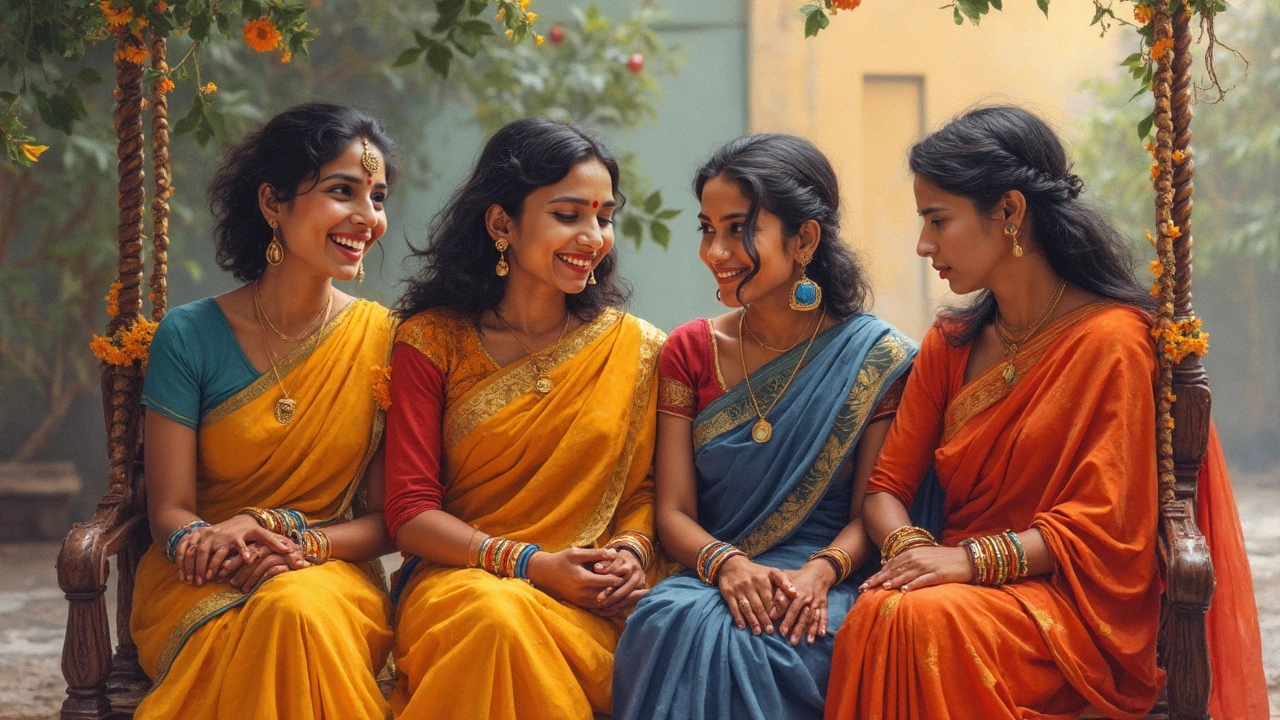
Types of Bangles and Their Uses
Walk into any market or jewelry shop in India and you’ll spot bangles of every kind—glass, gold, silver, lac, plastic, even wooden. Each type has its own place in a woman’s life and a unique story behind it. It’s not just about a fancy accessory, but about traditions that shape daily life and special events.
Bangles made of glass are the most common and affordable. Women wear them daily, and during festivals like Diwali or Karva Chauth, they’ll often match the colors to their outfits. In some states, married women stick to red and green glass bangles to bring good luck. Fun fact: there’s even a belief that if a glass bangle breaks, it’s supposed to take away bad luck.
- Gold Bangles (Kadas/Chudis): These are family treasures, often gifted during weddings or childbirth. Gold bangles are seen as a sign of wealth and status. Most moms pass down their gold bangles to daughters—kind of like a safety net in hard times since they can be sold or pawned if needed.
- Silver Bangles: These are popular for both daily wear and traditional functions. Newborn babies get tiny silver bangles as gifts. Some believe silver helps with health, so it’s not just about style.
- Lac Bangles: Known for their bold, bright colors and crafty designs, these come from places like Rajasthan and Hyderabad. They’re a hit during festivals and fairs. Artists hand-make these from resin, and you’ll spot women stacking dozens up their arms during local celebrations.
- Plastic and Metal Bangles: Perfect for modern, everyday use. These are cheap, tough, and can be mixed and matched in endless ways. Working women or students often choose these because they don’t break easily and look good with western outfits, too.
When picking bangles, women think about the occasion. Weddings mean gold or red glass; family poojas (rituals) call for specific colors or patterns; casual hangouts might just need something comfy and simple. Some families even have unspoken rules on when and what kind of bangles should be worn. It’s all about blending tradition, practicality, and a little bit of personal flair. Don’t be surprised if you see girls stacking dozens up their arms, mixing old family pieces with new styles. That’s the charm: these bangles aren’t just jewelry—they’re a part of life’s everyday routine in India.
Tips for Choosing and Wearing Bangles
Shopping for bangles might look simple, but there’s a lot to keep in mind if you want to get it right. If you rush, you might end up with bangles that break too easily, clash with your outfits, or just feel uncomfortable. Let’s break down some practical tips so you don’t have to learn these lessons the hard way.
- Bangles should fit just right—not too tight that your wrist feels squeezed, and not too loose that they slip off. The old-school trick? Measure the widest part of your hand (not your wrist), because bangles have to slide over that. Many stores will help you find your size, and some even let you try a few before you buy.
- Match bangles to the occasion. Glass and plastic bangles are great for daily wear—they’re affordable and come in every color you can think of. Metal, gold, or silver bangles are usually saved for parties, weddings, or religious events. If you work with your hands a lot or have kids tugging at your arms, stick with sturdy metal or flexible lac bangles—they don’t snap easily.
- Mix and match for your style. You don’t have to stick with one kind. Loads of women layer thin colorful bangles with one or two chunky metal ones in between. Want to make it look balanced? If your outfit’s loud, go for subtle bangles. If you’re keeping it simple with your clothes, add pops of color or a bit of sparkle on the wrists.
- Don’t ignore comfort. Some bangles come with sharp edges or rough designs inside, and those can scrape your skin. Always feel the inside before buying, especially with metal bangles. Glass bangles can break, so avoid stacking dozens on each arm unless you’re used to it. And watch out for noisy ones at work—they can distract you and everyone else in the room.
Finally, keep your bangles in a cloth pouch or bangle holder so they last longer. Pro tip: avoid storing them in humid places—moisture can dull metal and fade color from glass bangles. With just a little planning, you’ll have the perfect set ready for every mood and event.
